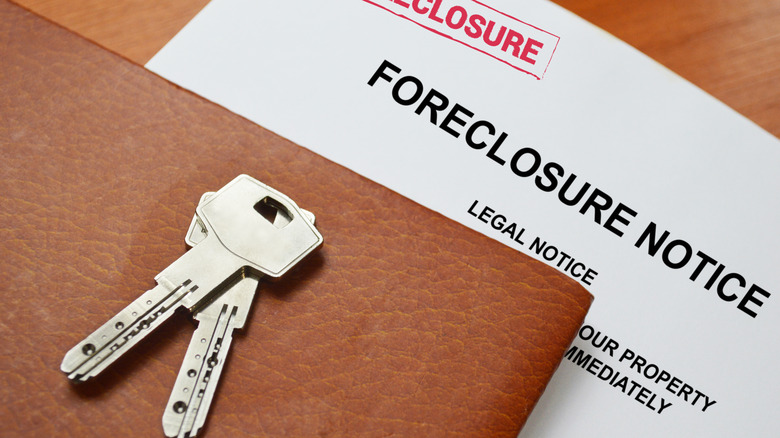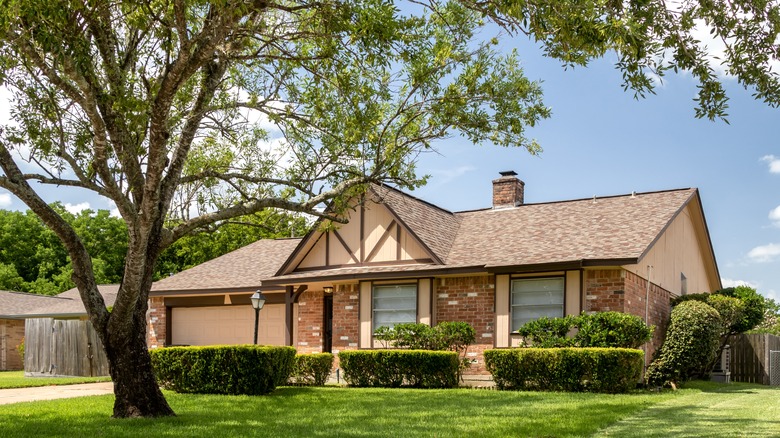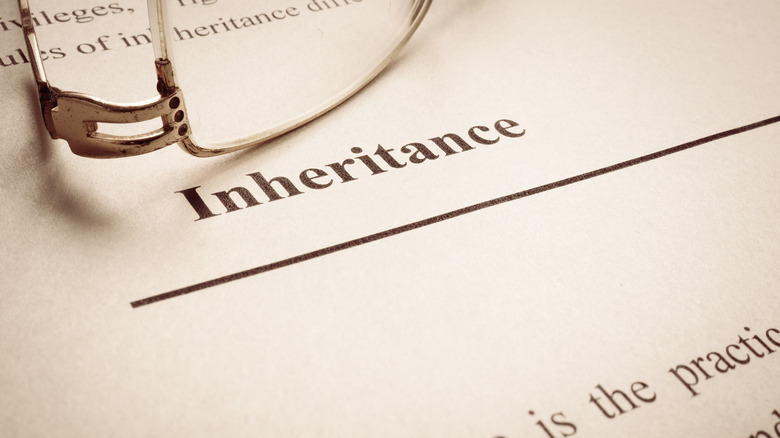The 5 Best And 5 Worst Things About A Reverse Mortgage
Reverse mortgages are a unique financial product that homeowners 62 years and older can take advantage of. It is a means of borrowing capital from the equity value of your home without having to sell it. It can be a great way to facilitate a vibrant and enjoyable retirement. However, there are some significant pitfalls that a homeowner must navigate when considering the use of a reverse mortgage.
Any type of lending product comes with its own blend of positive and potentially negative consequences. A reverse mortgage is no different in this regard. Indeed, it might be the perfect solution to your unique financial circumstances and requirements, but the truth is that this and any other lending product that you might be considering comes along with a complex set of rules and regulations, repayment terms, and qualification requirements. Consider these five pros and cons when weighing your options, and you'll be able to suss out if it's the right decision for you.
What is a reverse mortgage
Simply put, a reverse mortgage is a financial product that allows homeowners over the age of 62 to get capital from their property without selling the asset. A reverse mortgage acts in a manner similar to a home equity line of credit. The draw period, so to speak, extends from when you take out the loan until you sell the property and move on. While you live in your home, you won't have to pay the balance of the reverse mortgage. This makes reverse mortgages a great option for retired people looking to expand their budget in a meaningful way.
Reverse mortgages free up the financial equity that you've built up in your property over the years, but the financial product isn't free, of course. They are often structured with insurance backing through the Federal Housing Administration, and borrowers pay a premium of 0.5% of the loan balance annually to take advantage of this product. This means that you'll still need to budget every month to cover this charge, but that payment will be far smaller than the typical mortgage that homeowners will be used to. It's also possible to roll this cost into the loan itself.
Benefit: Reverse mortgages can be leveraged to eliminate an existing home loan
Perhaps one of the easiest ways to think about your reverse mortgage is as a leveraged item that can eliminate your existing home loan. You don't need to own your home outright to take advantage of the reverse mortgage, so you can use your own equity in the property to pay off the remainder of your existing loan balance. The average homeowner in the United States pays $1,230 per month on their mortgage bill. Bringing this monthly expense down to zero can act as a game changer for someone approaching retirement age and worrying about how to budget for this and other costs while simultaneously slashing their incoming salary.
Doing away with your remaining mortgage balance is also a great way to save on the overall cost of the home purchase itself. A lengthy mortgage is a valuable means of stretching your monthly budget for greater cash flow, but the faster you pay off the loan, the less additional interest you'll be charged. This means that even though you'll have to pay ongoing annual charges to maintain a reverse mortgage, the overall financial swing can work heavily in your favor when you consider you won't have interest hanging over your head.
Challenge: A reverse mortgage can be an expensive financial product to take on
Speaking of costs, no financial product comes without one. Your reverse mortgage requires annual premium fees, as noted above. However, when you first sign the loan, there is also an origination fee, which is the fee a lender charges for processing your application. For reverse mortgages, this can be as much as 2% of the loan but cannot exceed $6,000. This obviously increases your costs, but even more so if it is tacked on to the loan balance rather than paid as a flat charge upon taking out the loan initially. Adding origination fees to a loan balance means it will also accrue interest alongside the principal borrowed.
As with any lending product, it's worth speaking to a specialist at your bank or any other financial professional before finalizing any lending agreement. A reverse mortgage can be an immensely beneficial fiscal product for many nearing or in retirement, but it is not right for everyone. Because of the costs that come with this borrowing opportunity, it's worth speaking with a professional and thinking about your own needs and future plans to understand whether the costs make sense.
Benefit: You remain in your home while taking advantage of its status as a financial asset
One powerful asset that comes along with a reverse mortgage is the ability to remain in your home even as you extract capital from it. Generally speaking, to take advantage of your equity in a property, you'll need to sell the house and move. To make this more complicated, when moving, you'll obviously need to buy a new property or rent a place to live. This means that you can only really extract capital from a home if you exchange your current financial and residential circumstances for one that costs significantly less. This may not be feasible in all but the most niche circumstances.
With a reverse mortgage, instead of selling the property, you can leverage your equity to access capital today while remaining in the house as usual. This might seem too good to be true, but millions of American adults have taken advantage of this opportunity for years. For a homeowner who has diligently built equity in their home throughout the course of their adult life, the ability to use this tool to create a more inviting and relaxing retirement is a welcome resource that can be immensely beneficial.
Challenge: You can still lose your home as a result of foreclosure
While the benefits of a reverse mortgage are evident, many of the potential problems that can arise remain somewhat hidden. The most dramatic of the problems is that you can still lose your home to foreclosure. This can happen if the homeowner fails to keep up with property taxes, homeowners' insurance, and other fees and costs that are built into the project of homeownership.
Foreclosure is a difficult process for families of all types. The loss of a home can be devastating and lead a homeowner to wonder how they will recover. But this issue becomes even more substantial when it happens to older adults who have successfully navigated homeownership for years and diligently paid their mortgage. Older homeowners may have a more sentimental connection to their property, and the physical and financial toll of moving may be magnified at this stage of life. Broadly speaking, foreclosure is a disastrous outcome for any homeowner, but succumbing to this fate through the mismanagement of a reverse mortgage is all the more devastating.
Benefit: Even if the new debt rises above your home's value, you're protected
One thing that you won't have to worry about is the consequences of your property value going underwater. A dramatic turn in home property values defined the housing market collapse of the late 2000s. Market values cratered to levels below the existing mortgage loans, leaving people owing more than they'll ever sell for. When the home value goes underwater, homeowners are forced to scrape and claw to remain in their property at all costs. Selling a home for less than the existing mortgage obligation means that a homeowner would walk away still owing the bank, eliminating any potential to purchase a new property.
With a reverse mortgage, you are protected by FHA insurance, meaning that even if the loan balance rises above your home's value, you and your heirs won't have to pay this overage. This is welcome news for many considering using a reverse mortgage because external market factors can change the value of a property in major ways. This level of protection means that you'll never have to worry about leaving behind a net debt on your property to your heirs.
Challenge: These products can severely impact the amount you leave to heirs
While your heirs won't have to pay above and beyond the value of your property in order to settle the reverse mortgage debt, the need to repay this obligation remains in effect. Typically, homeowners make use of reverse mortgages in their later years and will pass on the burden of settling the debt to their children. In addition to that, any debts that you carry on will reduce the overall inheritance that you leave behind for heirs. While children cannot inherit debt from their parents (in the same, classical sense that they can inherit a home or family heirlooms), however, lenders will typically draw on any assets left behind.
A reverse mortgage will almost certainly cut into the amount that you leave behind after you pass away. Of course, a homeowner can start making repayments on this debt before passing the burden to their loved ones, but this is often an exception rather than the rule when using a reverse mortgage. The amount you leave behind may be a significant consideration as you approach and progress through retirement, or it might not be very important.
Benefit: Entering retirement without large cash reserves can still be feasible
One great aspect of reverse mortgages is the fact that you can liquidate capital reserves to a fairly substantial extent. This means you won't have to amass a large savings account or investment portfolio for a comfortable retirement. This can give you the boost you need to confidently jump into retirement, even if you haven't saved as diligently as you'd like.
This is great news for all kinds of homeowners across the country. The reality of retirement savings is that most people simply aren't prepared for the financial rigors that come along with this period of life. Retirement is meant to be relaxing and enjoyable, but all too often, seniors are forced back into the workplace because their assets simply aren't up to scratch. Social Security payments alone will not suffice to facilitate a happy and healthy retirement in all but the slimmest circumstances. T. Rowe Price reports that the average senior will require roughly 75% of their preretirement salary to maintain the same lifestyle that they're accustomed to. This means you'll need to save 10 times your annual salary (at 67) to facilitate adequate dividends and other investment payouts for the remainder of your life.
Challenge: You won't be able to move
It's important to remember that a reverse mortgage will definitively limit your ability to move. When you leave the home, either through the decision to move to a new property or by passing away, the debt will become due. Upon your death, your heirs typically have about a year to organize the specifics of this process, but it can be a far more rapid timeline if you simply decide you want to move into a new property. Not only will you have to manage the repayment sooner than perhaps expected, but you will also have paid an origination fee and other expenses to take advantage of this financial product for only a very short period of time.
Homeowners who are considering downsizing their property should not use a reverse mortgage. Similarly, a reverse mortgage may be less beneficial for someone who might need to relocate to a nursing home or facility due to health-related reasons. To maintain a reverse mortgage, you'll need to spend most of the year in your property, which can become murky when it comes to assisted living facilities and other arrangements.
Benefit: You and your heirs have many options when settling the debt
While a reverse mortgage will cut into the dollar amount you leave to your heirs, this financial arrangement allows for increased flexibility when dealing with your home after your passing. For one thing, if the debt has risen above the market value of your property, then your heirs can simply hand over the title to the home and allow the insurance coverage to kick in. This will settle the debt and take care of any additional obligation through your insurance backing. It's also possible to refinance this debt into a more traditional mortgage arrangement or sell the property and settle your relationship with your reverse mortgage lender in the way that a traditional property obligation would be handled.
The wealth of options available to your heirs makes this a versatile lending option that can help you in the short term and provide great flexibility to your loved ones after you have gone. If you currently retain mortgage payments (in the form of a first or second mortgage) on the property, this same flexibility may not be available when settling your estate.
Challenge: There are many open-ended questions that may arise
One last consideration worth noting in regard to a reverse mortgage is the fact that complicated situations can play out in a number of different ways when managing one. For one thing, if you have to move into a nursing home, it can be difficult to determine whether your permanent residence has changed or not. This can lead to discrepancies over whether the reverse mortgage balance must be paid immediately or if the arrangement remains intact and unchanged.
Similarly, for a couple living in a home that is legally owned by only one of the pair, dealing with the fallout of the borrower's death before their spouse or partner can create unique hurdles that are hard to quantify or manage. Surviving spouses enjoy a set of rights to the property, but your own personal and legal arrangements with loved ones can be more complicated than a simple marriage. Several questions can arise during the management of a reverse mortgage, so speaking with a financial professional and getting clarity on these and other issues before taking out this lending product is absolutely essential.











